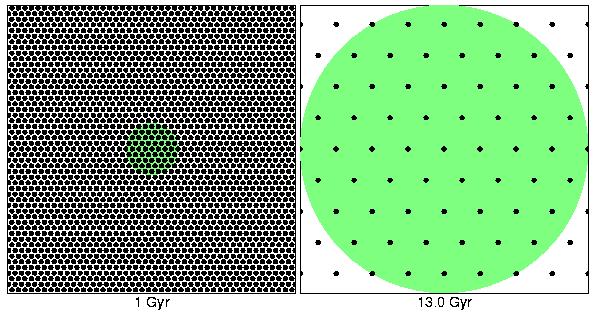
The Universe was not concentrated into a point at the time of the Big
Bang. But the observable Universe was concentrated into a
point. The distinction between the whole Universe and the part of it
that we can see is important. In the figure below, two views of the
Universe are shown: on the left for 1 Gyr after the Big Bang, and on
the right the current Universe 13 Gyr after the Big Bang (assuming that
the Hubble constant is Ho = 50 km/sec/Mpc and the Universe
has the critical density.)

Note that the black dots represent galaxies, and the galaxies do not expand even though the separation between galaxies grows with time.
FAQ | Tutorial : Part 1 | Part 2 | Part 3 | Part 4 | Age | Distances | Bibliography | Relativity
© 1997-1998 Edward L. Wright. Last modified 8-May-1998